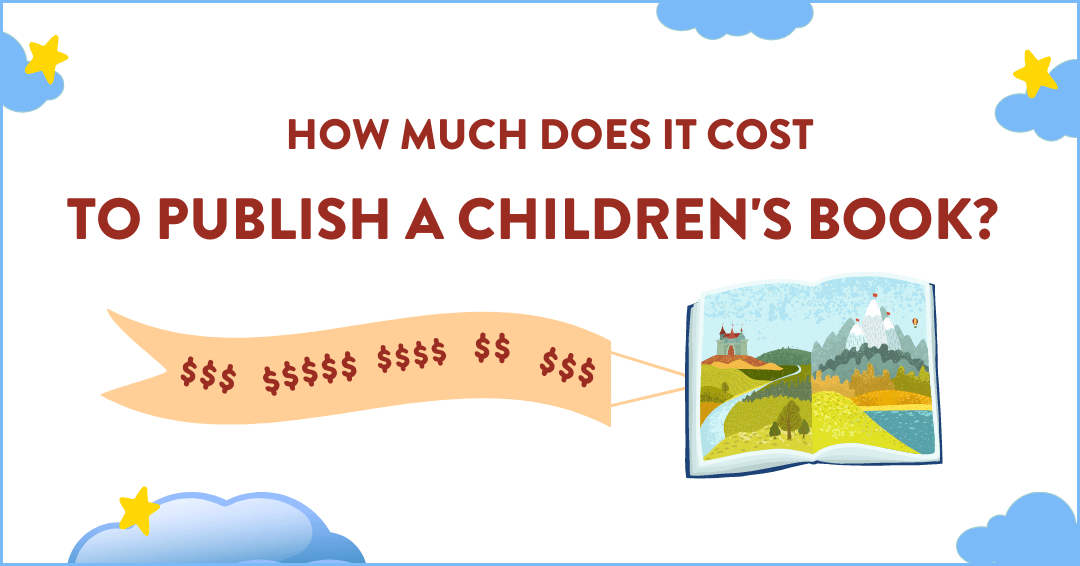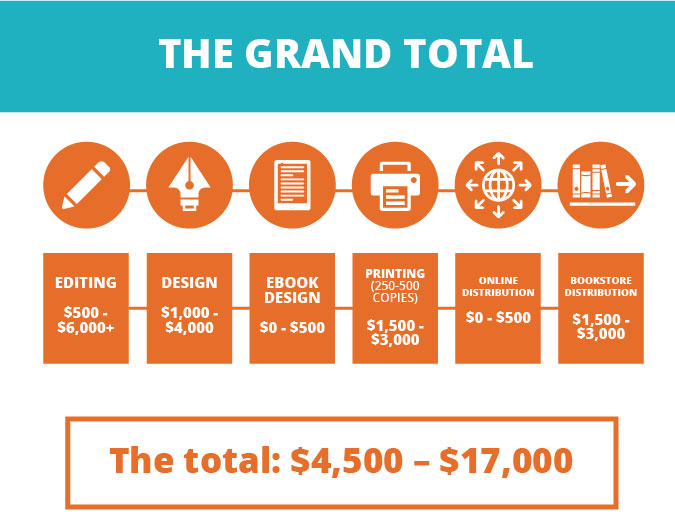Thinking about self-publishing your book but worried about the costs? You’re not alone.
Many writers wonder exactly how much money they’ll need to invest before seeing their work in print or online. Knowing the real expenses upfront can save you from surprises and help you plan better. You’ll discover the true costs of self-publishing and learn how to manage your budget wisely, so you can focus on what matters most—sharing your story with the world.
Keep reading to find out what you need to prepare for your self-publishing adventure.

Credit: thejohnfox.com
Self-publishing Basics
Self-publishing means you publish your book without a traditional publisher. You control the process from start to finish. This choice gives you freedom but also means you handle all costs. Knowing the basics helps you plan your budget well.
Many writers choose self-publishing to keep creative control. They also want to earn more from their sales. Costs vary depending on the services you use and the quality you want.
Traditional Vs Self-publishing Costs
Traditional publishing usually has no upfront costs for the author. The publisher pays for editing, design, printing, and marketing. But they take a big part of the book’s earnings.
Self-publishing requires you to pay for these services yourself. You decide how much to spend. This can be cheaper or more expensive than traditional publishing, depending on your choices.
With self-publishing, you keep most of the profits. But you must invest money first. This trade-off is important to understand before starting.
Common Expenses To Expect
Editing is essential. A good editor can improve your book’s quality. Prices range from a few hundred to a few thousand dollars.
Cover design is another cost. A professional cover attracts readers. It usually costs between $100 and $500.
Formatting prepares your book for print and digital versions. This service can cost $50 to $300.
Marketing and promotion also require a budget. Ads, social media, and giveaways help sell your book. Costs vary widely based on your plan.
Printing costs depend on the number of copies and quality. Print-on-demand services reduce upfront expenses.

Credit: www.publishing.com
Manuscript Preparation Costs
Manuscript preparation costs form a key part of self-publishing expenses. Preparing a book for publishing takes time and effort. It often requires professional help to make the manuscript ready for readers. These costs can vary depending on the services you choose. Understanding these fees helps plan your budget better.
Editing And Proofreading Fees
Editing improves the flow, clarity, and structure of your manuscript. Editors check grammar, spelling, and punctuation mistakes. Proofreading catches any remaining errors before publication. Costs depend on the editor’s experience and manuscript length. Expect to pay between $200 and $2,000 for thorough editing and proofreading.
Cover Design Expenses
The book cover attracts readers and sets the tone for your story. A professional cover designer creates eye-catching images and typography. Prices vary based on design complexity and designer reputation. Simple designs may cost $100 to $300. More detailed covers can reach $500 or more.
Formatting Charges
Formatting makes your manuscript look good on e-readers and print. It includes setting margins, fonts, and chapter headings. Proper formatting improves reading experience and avoids errors. Formatting fees range from $50 to $300 depending on the book’s length and format types.
Publishing Platform Fees
Publishing platform fees are a key part of self-publishing costs. These fees cover the tools and services that help authors get their books online. Understanding these fees helps you plan your budget better.
Print-on-demand Costs
Print-on-demand (POD) lets authors print books only when ordered. This avoids large upfront printing costs. POD services charge a fee per book printed. Prices vary by page count, book size, and ink color. Some platforms include printing costs in royalties. Expect to pay between $3 and $8 per copy.
Ebook Distribution Fees
Ebook platforms charge fees to sell your digital book. Most take a percentage of each sale, usually 30%. Some platforms have no upfront fees but keep a cut of earnings. You may pay a small fee for listing or uploading files. Choose the platform that fits your budget and goals.
Isbn And Copyright Registration
An ISBN is a unique number for your book. It helps bookstores and libraries track your title. Some platforms offer free ISBNs but list their name as the publisher. Buying your own ISBN costs about $125 per number. Copyright registration protects your work legally. It usually costs around $45 but is optional.

Credit: grammarfactory.com
Marketing And Promotion Expenses
Marketing and promotion are key parts of self-publishing costs. These expenses help your book reach readers. Without marketing, even the best book may stay unseen. Budgeting for promotion is vital for success.
Costs vary based on the methods you choose. You can spend little or a lot. Smart planning keeps costs manageable and effective.
Book Launch Strategies
A strong book launch creates early buzz. Common strategies include virtual events, giveaways, and reviews. Some authors hire launch teams or use paid services. Costs depend on the scale and tools used. Plan your launch to fit your budget and goals.
Advertising Options
Paid ads boost book visibility fast. Popular platforms are Amazon Ads, Facebook, and Instagram. You can set daily or total limits on spending. Ads need testing to find what works best. Start small and increase spending as you see results. Ads can be a major cost but often bring sales.
Author Website And Branding
A professional website builds trust with readers. It hosts your book info, blog, and contact details. Costs include domain, hosting, and design. Branding involves a logo, colors, and style. DIY websites save money but may need more time. A clear brand helps readers remember you.
Hidden And Unexpected Costs
Self-publishing can seem affordable at first. Many writers focus on clear costs like editing and cover design. Yet, some hidden costs often catch authors by surprise. These costs can add up fast and affect your budget.
Understanding these unexpected expenses helps you plan better. It avoids stress and last-minute money troubles. Below are some common hidden costs in self-publishing.
Revisions And Updates
Books often need changes after the first print. You may spot errors or want to improve the content. Each update can cost money, especially with print books.
Digital books also need edits but are cheaper to update. Still, frequent revisions can drain your budget. Plan for some extra costs here.
Legal And Administrative Fees
Protecting your book legally is important. Copyright registration or ISBNs may involve fees. Sometimes, contracts with editors or designers require lawyer review.
These costs seem small but add up. You may also pay for business licenses or tax registrations, depending on your location.
Shipping And Distribution Charges
Physical books need shipping to stores or customers. Shipping costs vary by size, weight, and destination. These fees can surprise new authors.
Distribution platforms may take a cut or charge fees. Some services charge for returns or storage. Always check shipping and distribution terms carefully.
Budgeting Tips For Self-publishers
Budgeting is key for self-publishers. It helps control costs and avoid surprises. Planning your spending makes the process smoother and less stressful.
Understanding where to spend and where to save is important. This section offers tips to manage your self-publishing budget wisely. It covers cost-saving methods, setting priorities, and useful tools.
Cost-saving Strategies
Use free or low-cost editing tools for first drafts. Ask friends or writing groups to review your work. Consider learning basic design skills to create your cover. Print small batches of books instead of large runs. Use print-on-demand services to avoid upfront printing costs.
Prioritizing Expenses
Focus on editing and cover design first. These impact readers’ impressions the most. Allocate more budget to professional editing if possible. Marketing can start small and grow later. Avoid spending heavily on unnecessary extras early on.
Tools And Resources
Use free writing apps like Google Docs or LibreOffice. Try Canva for simple cover designs without cost. Find free stock photos on sites like Unsplash. Join author communities for advice and support. Use budgeting apps to track your spending easily.
Frequently Asked Questions
How Much Does Self-publishing Usually Cost?
Self-publishing costs vary widely but typically range from $500 to $5,000. Expenses include editing, cover design, formatting, and marketing. Authors can control costs by choosing services wisely. Budgeting helps avoid overspending while ensuring quality. Overall, costs depend on professional help and marketing efforts.
What Are Hidden Costs In Self-publishing?
Hidden costs include ISBN purchase, book marketing, and distribution fees. Editing and cover design revisions can also add expenses. Some platforms charge for print proofs or expanded distribution. Being aware of these helps authors budget effectively and avoid surprises. Planning ahead minimizes unexpected spending.
Can I Self-publish For Free?
Yes, you can self-publish for free on platforms like Amazon Kindle Direct Publishing. However, free options limit professional services like editing and cover design. Free publishing may reduce book quality and sales potential. Investing in key services improves book credibility and reader experience.
How Much Does Professional Editing Cost?
Professional editing costs range from $300 to $2,000 depending on book length and editor expertise. Types include developmental, copyediting, and proofreading. High-quality editing improves readability and professionalism. It is a crucial investment for book success and positive reviews.
Conclusion
Self-publishing costs vary depending on your choices. You can spend little or invest more for quality. Editing, cover design, and marketing add to expenses. Planning your budget helps avoid surprises later. Many authors find ways to save money. The right balance depends on your goals.
Start small, learn, and improve as you go. Self-publishing offers control over your book’s future. Every author’s path is unique. Choose what fits your needs and resources.